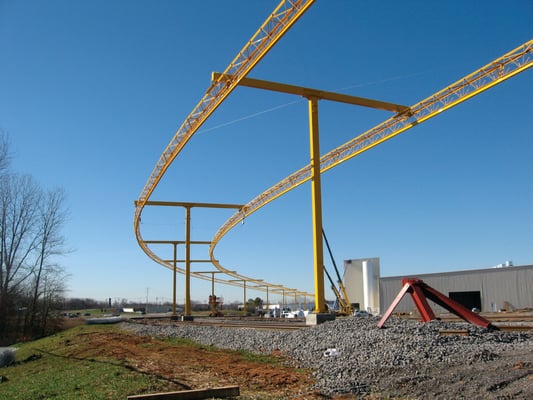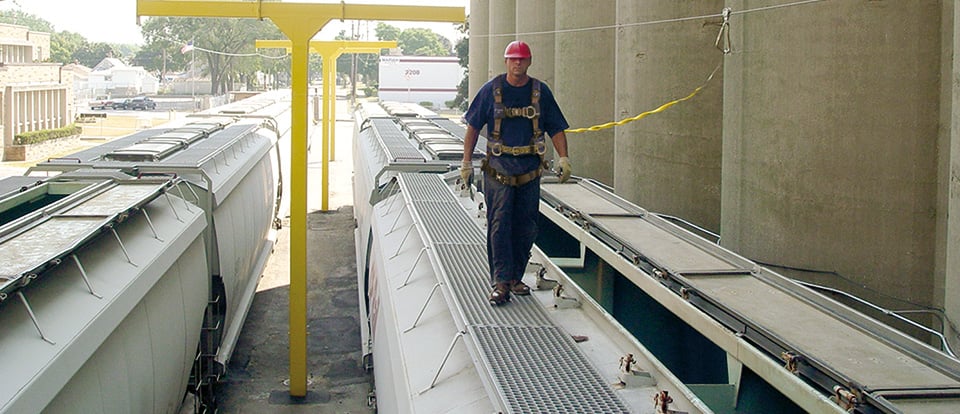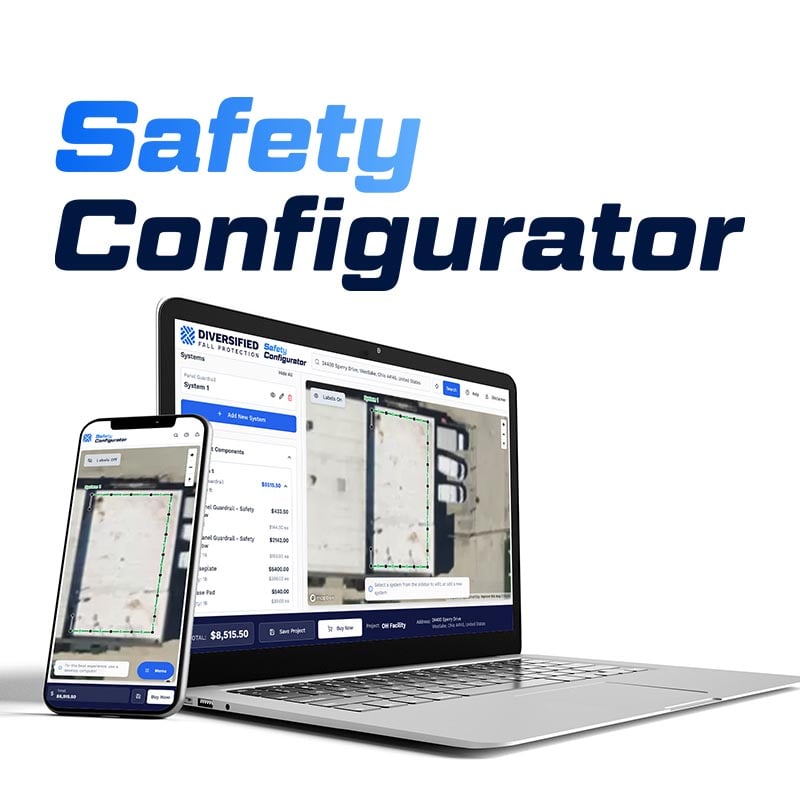
Horizontal Lifelines vs. Rigid Rail Systems
When it comes to fall protection, many consumers first think of Horizontal Lifelines (HLL) for applications requiring lateral movement. This is because HLL systems are known for their affordability, ease of installation, and overall simplicity. However, like many fall protection solutions, there are certain drawbacks to consider, which may make alternatives such as Rigid Systems a better choice. Let’s dive into each system and discuss the advantages and disadvantages of each system, as well as how to choose which one is right for you.
Advantages of Horizontal Lifeline Systems

Horizontal Lifeline systems are designed to protect workers while still allowing for lateral movement. They are a set of anchorage points with a cable or line running horizontally along the work area, allowing for workers to attach their fall protection equipment and be prevented from reaching a hazard or arresting their descent if they do fall off an unprotected edge. Horizontal Lifeline systems come with distinct advantages:
- Ease of Installation: These systems are easy to install, often requiring minimal fabrication. Due to this simplicity customers sometimes believe that they can install a HLL system themselves, which we strongly discourage for reasons explained further below.
- Simplified Design: HLL designs are straightforward, with fewer components than other alternatives.
- Lower Up-Front Cost: The components, installation, and maintenance for these systems is comparatively low.
Limitations of Horizontal Lifeline Systems
While Horizontal Lifelines do have some benefits, there are some serious limitations that are often overlooked:
- Deflection Concerns: The amount of deflection exhibited in a HLL in a fall arrest situation is considerable. This deflection of the line can absorb some of the shock of the fall, but it also increases the fall clearance required, making the system ineffective at lower heights or in kneeling situations, putting the user’s life at risk.
- Load Placement: These systems place loads on the building structure at its weakest point and may require additional bracing for adequate protection.
Both of these drawbacks often lead consumers to have false confidence in their HLL system, believing it to be an effective form of fall protection when in reality it may not protect users as intended. Working with an experienced fall protection company is critical for this reason, as it will ensure that HLL systems are only used in appropriate situations and are installed correctly.
Advantages of Rigid Systems
.jpg?width=2667&height=2000&name=Aircraft%20(21).jpg)
Rigid Systems, such as overhead monorail or triangular truss, provide a higher level of protection while still allowing for the lateral movement and freedom afforded by Horizontal Lifelines. Some of its advantages are:
- Reduced Deflection: There is vastly reduced deflection in a Rigid System, leading to lower fall clearance requirements and greater system versatility.
- Even Load Distribution: Loads are evenly distributed through the Rigid System, making it a better solution for the integrity of the building structure.
Yet, Rigid Systems are not without their own set of drawback considerations. With higher levels of protection comes a higher level of complexity:
- Higher Costs: In many cases the cost of components, fabrication, and installation are higher in Rigid Systems than HLLs.
- Design Complexity: Design considerations increase, which increases the complexity of the system. These include considerations such as building attachment, proper coverage support, and installation with minimum impact to the structure.
Making the Right Choice
So how do you determine which system is right for your specific needs?
Horizontal Lifelines work well in many scenarios, and in the right application and when properly installed they provide an excellent level of protection. There are however some situations where HLLs should not be considered:
Prefabricated Buildings: Prefabricated buildings create some challenges for HLL systems. These buildings are designed for wind and weather protection, not structural support. This means that the loading is vertical in support of the roof structure, and the tension loads across the roof supports that Horizontal Lifelines require may lower the supports’ integrity and can be insufficient for fall loads. In short, in prefabricated buildings HLLs load the building in its weakest direction. In these scenarios Rigid Systems work much better since they can evenly distribute the load across the structure.
Low Fall Clearance: The most common reason for HLLs not being an optimal choice for many scenarios is fall clearance. Protecting the worker from the work position is the most critical criteria when selecting the proper fall protection system. Since Horizontal Lifeline systems have such a high amount of deflection during a fall event, the fall clearance required is often much more than what is assumed. Again, Rigid Systems are an excellent alternative in situations with lower heights or reduced fall clearance.
Seek Expert Guidance
Choosing the right fall protection system can be complex. When deciding which system is right for your application, take advantage of the expertise provided by your local Diversified Fall Protection Specialist. They can guide you through the process and ensure that you have the right system for your specific needs. Contact us to learn more.
Schedule an assessment with Diversified Fall Protection
Contact Us to request a fall safety review

b-1.jpg?width=1368&height=1340&name=Rail%20(175)b-1.jpg)

